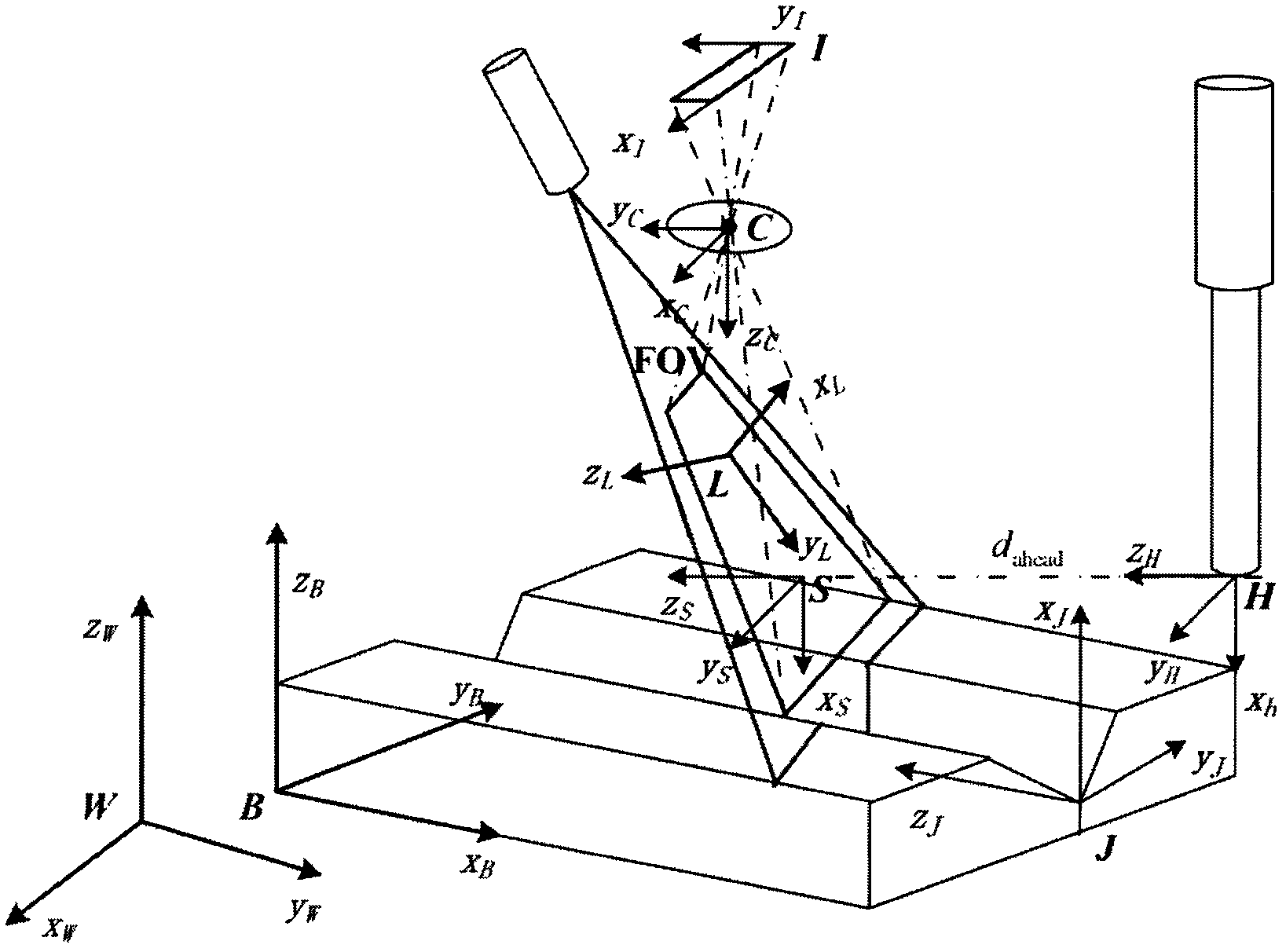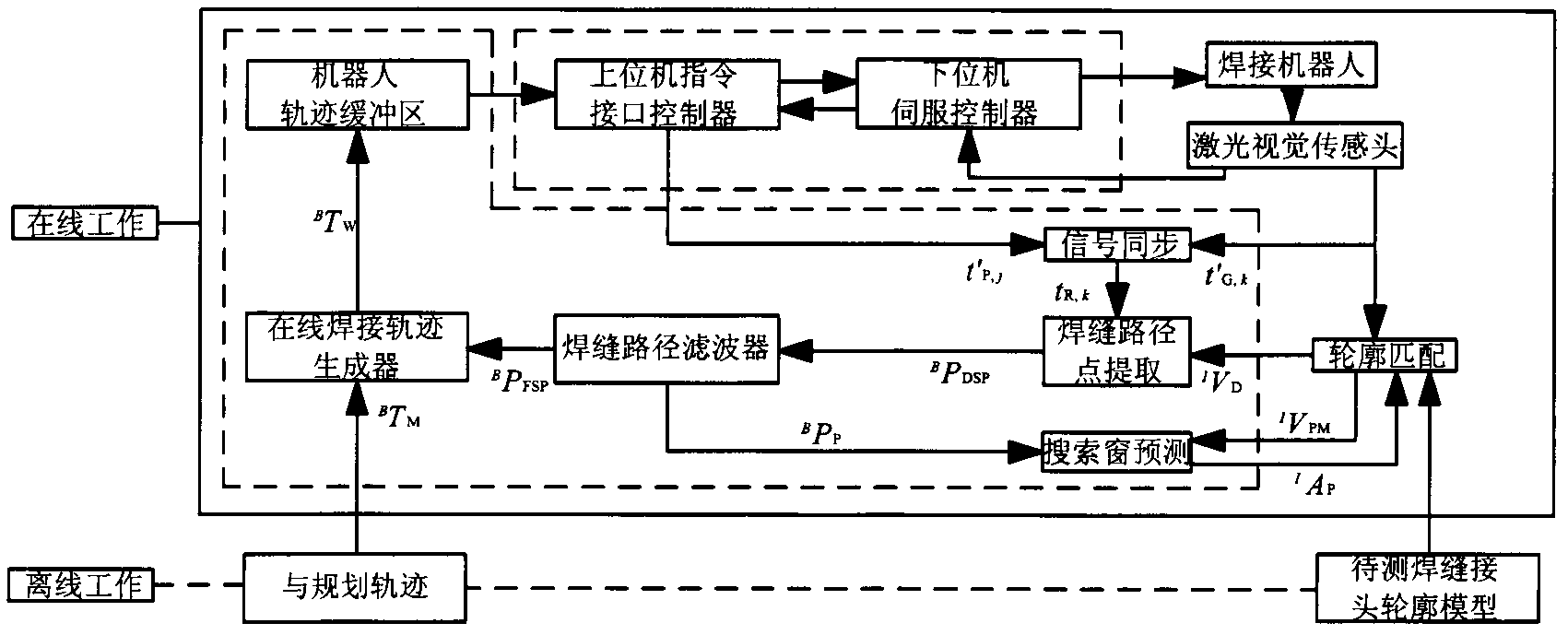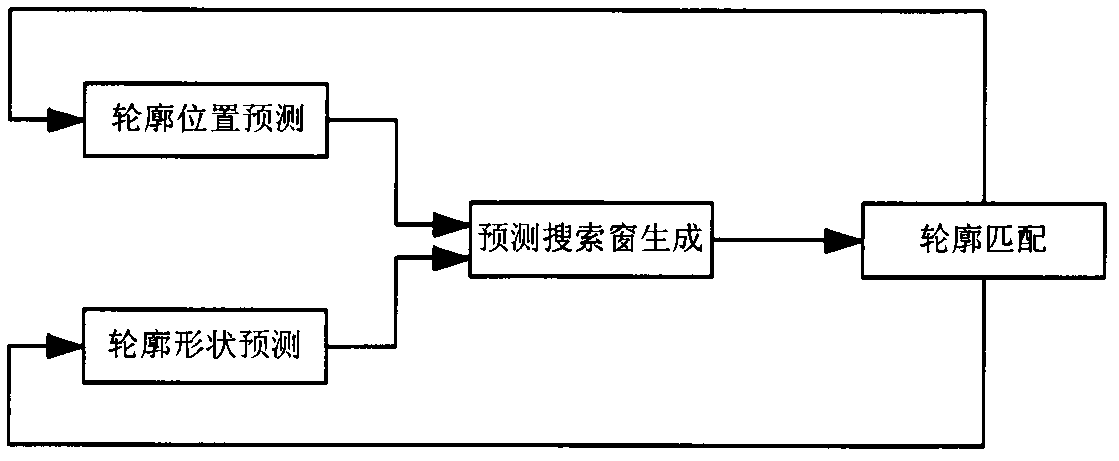Arc welding robot laser vision seam tracking control method based on offline planning
A tracking control and robot technology, applied in arc welding equipment, manufacturing tools, welding equipment, etc., can solve problems such as machining and assembly errors, dynamic deformation of weld beads, and increase production and manufacturing costs, to ensure reliability and accuracy, The effect of noise suppression
- Summary
- Abstract
- Description
- Claims
- Application Information
AI Technical Summary
Problems solved by technology
Method used
Image
Examples
Embodiment Construction
[0032] The present invention will be further described below in conjunction with accompanying drawing and embodiment:
[0033] A laser vision seam tracking control method for arc welding robots based on offline planning:
[0034] Such as figure 1 As shown, the corresponding coordinate system is established: including the world coordinate system W whose Z axis is always opposite to the direction of gravity; the robot base coordinate system B that represents the reference of the robot’s motion work space; the weld coordinate system J that represents the weld characteristics; The tool coordinate system H established at the tip of the welding wire; the sensor viewpoint coordinate system S representing the sensor viewpoint pose under weld seam tracking; the laser coordinate system L representing the homography relationship with the image plane; the line structured light sensor head The camera coordinate system C and the image plane coordinate system I of
[0035] Such as figure...
PUM
 Login to View More
Login to View More Abstract
Description
Claims
Application Information
 Login to View More
Login to View More - R&D
- Intellectual Property
- Life Sciences
- Materials
- Tech Scout
- Unparalleled Data Quality
- Higher Quality Content
- 60% Fewer Hallucinations
Browse by: Latest US Patents, China's latest patents, Technical Efficacy Thesaurus, Application Domain, Technology Topic, Popular Technical Reports.
© 2025 PatSnap. All rights reserved.Legal|Privacy policy|Modern Slavery Act Transparency Statement|Sitemap|About US| Contact US: help@patsnap.com



